Third times the charm. My guess is that this is a bug and Zhenya's answer suggests it's fixed in the latest version. I have version 0.99.1.1 and I've created the following solution:
import matplotlib.pyplot as plt
import numpy as np
def forceAspect(ax,aspect=1):
im = ax.get_images()
extent = im[0].get_extent()
ax.set_aspect(abs((extent[1]-extent[0])/(extent[3]-extent[2]))/aspect)
data = np.random.rand(10,20)
fig = plt.figure()
ax = fig.add_subplot(111)
ax.imshow(data)
ax.set_xlabel('xlabel')
ax.set_aspect(2)
fig.savefig('equal.png')
ax.set_aspect('auto')
fig.savefig('auto.png')
forceAspect(ax,aspect=1)
fig.savefig('force.png')
This is 'force.png':

Below are my unsuccessful, yet hopefully informative attempts.
Second Answer:
My 'original answer' below is overkill, as it does something similar to axes.set_aspect(). I think you want to use axes.set_aspect('auto'). I don't understand why this is the case, but it produces a square image plot for me, for example this script:
import matplotlib.pyplot as plt
import numpy as np
data = np.random.rand(10,20)
fig = plt.figure()
ax = fig.add_subplot(111)
ax.imshow(data)
ax.set_aspect('equal')
fig.savefig('equal.png')
ax.set_aspect('auto')
fig.savefig('auto.png')
Produces an image plot with 'equal' aspect ratio:
 and one with 'auto' aspect ratio:
and one with 'auto' aspect ratio:

The code provided below in the 'original answer' provides a starting off point for an explicitly controlled aspect ratio, but it seems to be ignored once an imshow is called.
Original Answer:
Here's an example of a routine that will adjust the subplot parameters so that you get the desired aspect ratio:
import matplotlib.pyplot as plt
def adjustFigAspect(fig,aspect=1):
'''
Adjust the subplot parameters so that the figure has the correct
aspect ratio.
'''
xsize,ysize = fig.get_size_inches()
minsize = min(xsize,ysize)
xlim = .4*minsize/xsize
ylim = .4*minsize/ysize
if aspect < 1:
xlim *= aspect
else:
ylim /= aspect
fig.subplots_adjust(left=.5-xlim,
right=.5+xlim,
bottom=.5-ylim,
top=.5+ylim)
fig = plt.figure()
adjustFigAspect(fig,aspect=.5)
ax = fig.add_subplot(111)
ax.plot(range(10),range(10))
fig.savefig('axAspect.png')
This produces a figure like so:

I can imagine if your having multiple subplots within the figure, you would want to include the number of y and x subplots as keyword parameters (defaulting to 1 each) to the routine provided. Then using those numbers and the hspace and wspace keywords, you can make all the subplots have the correct aspect ratio.

 and one with 'auto' aspect ratio:
and one with 'auto' aspect ratio:

